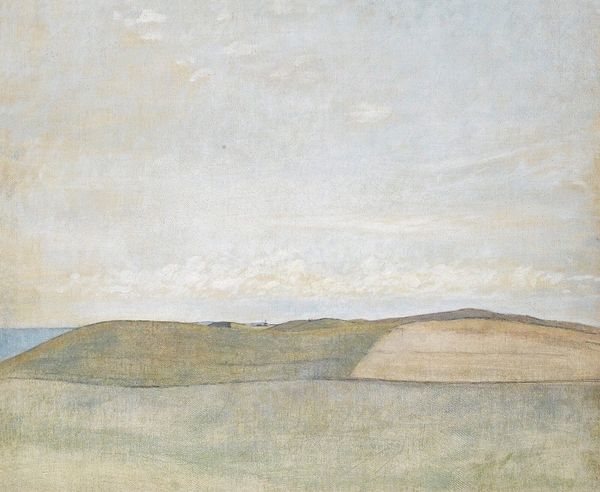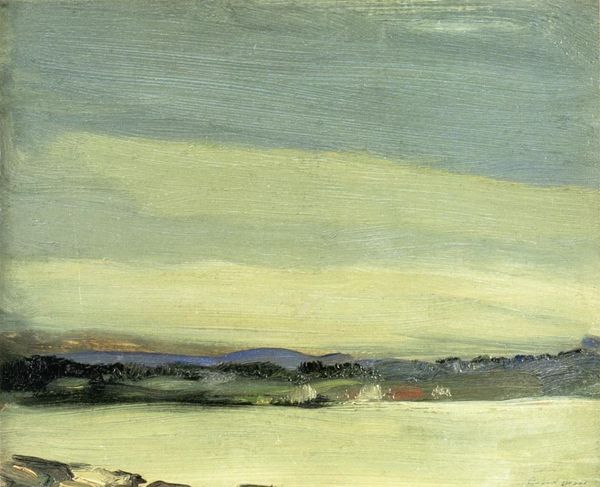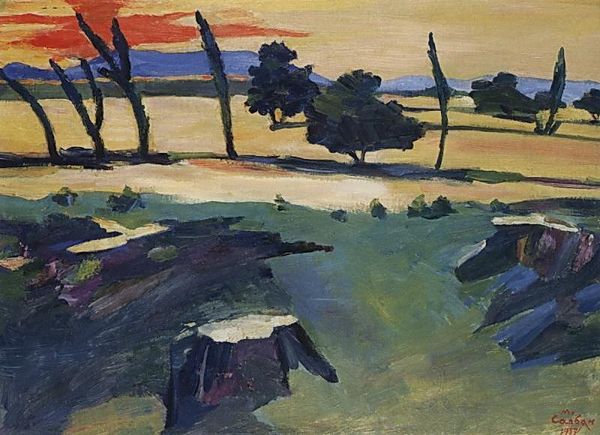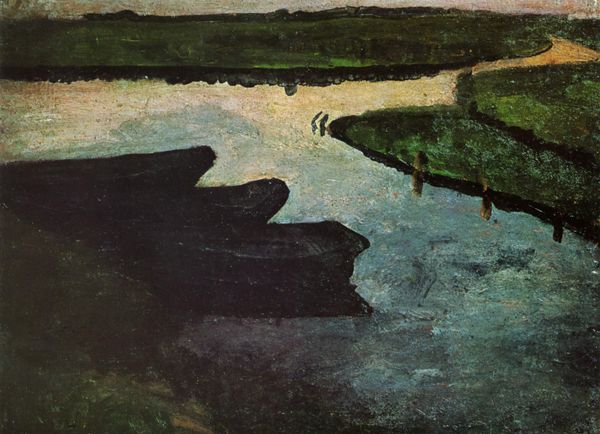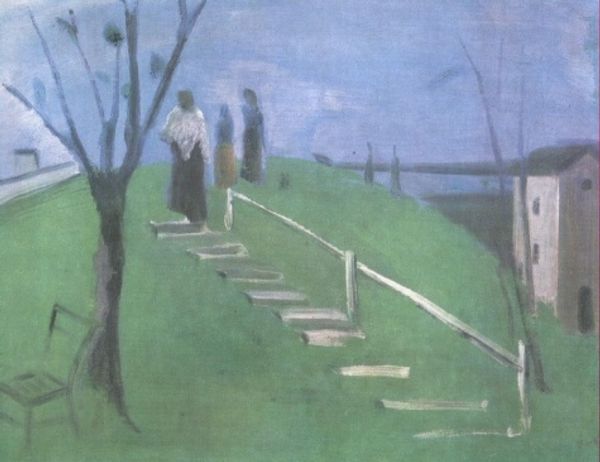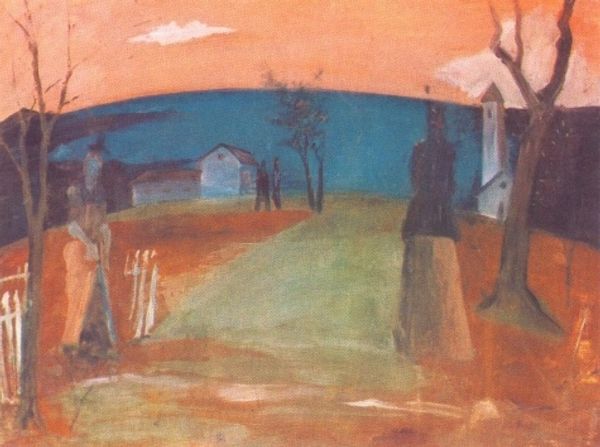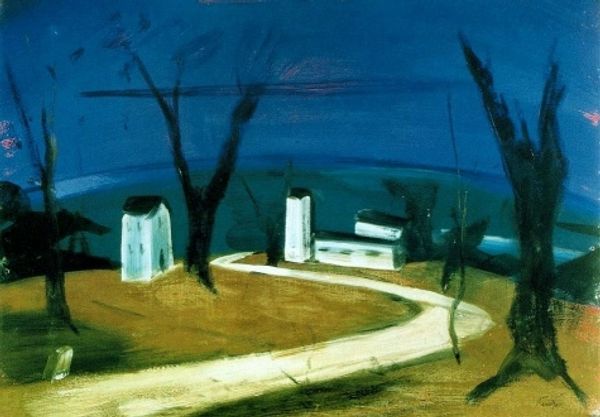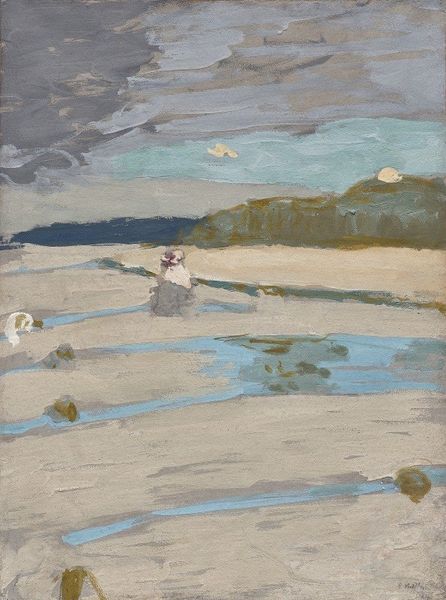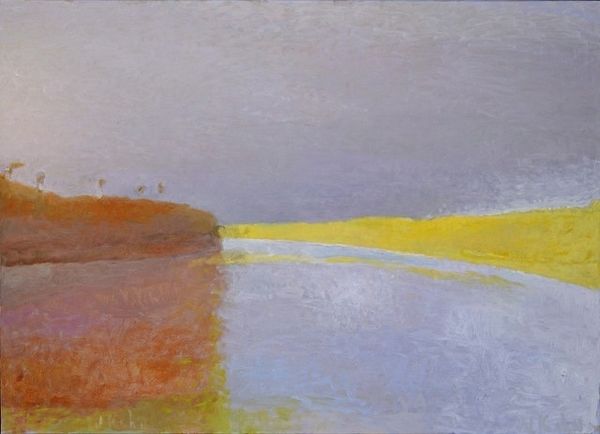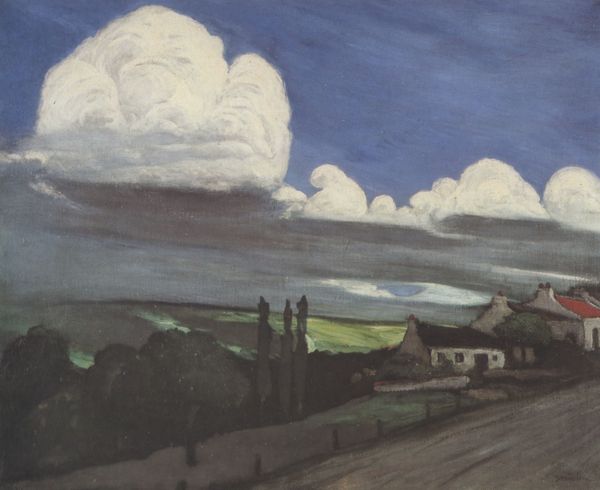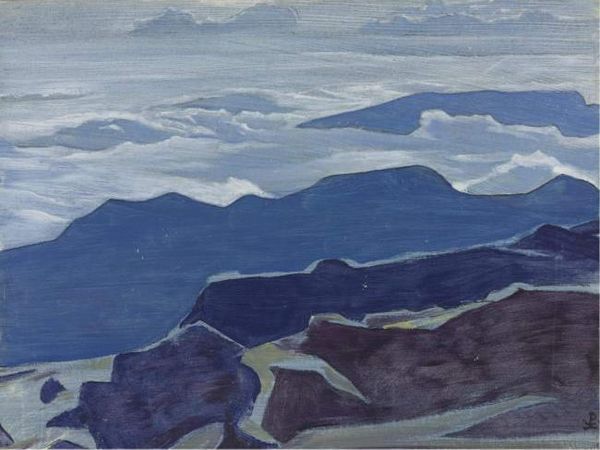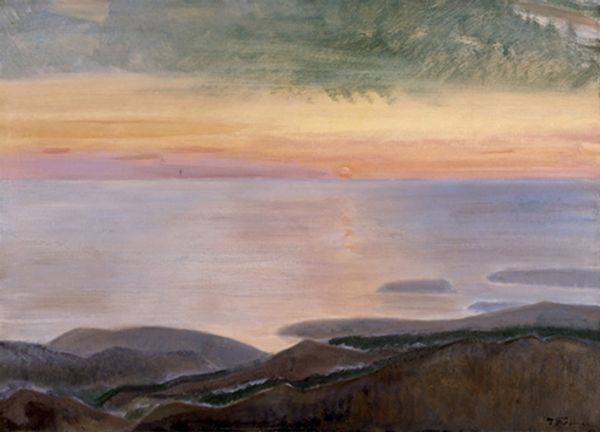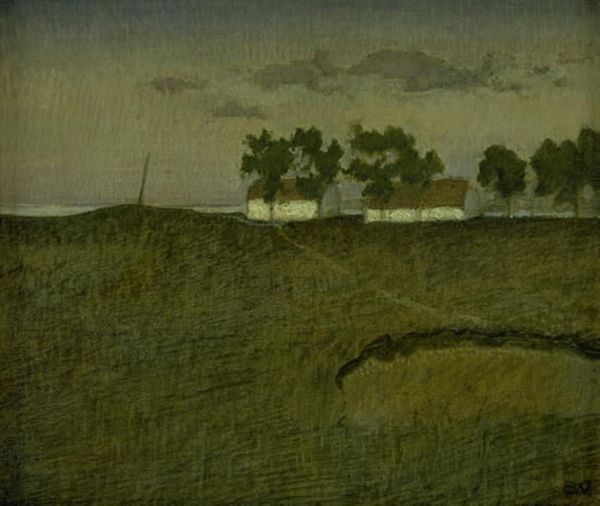
painting, watercolor
#
painting
#
landscape
#
watercolor
#
modernism
#
watercolor
Copyright: Public domain
Curator: Welcome. Here we see Istvan Farkas's "Green and Black French Landscape," a watercolor painted in 1930. Editor: It's instantly melancholic. The dominant hues of green and black certainly evoke a sense of stillness and perhaps even slight unease. The composition itself, with its heavy sky, feels unbalanced. Curator: Unbalanced? I see a rather intentional arrangement. The artist uses broad washes of color to delineate space, and those subtle gradations within the greens give depth. Consider how the layering contributes to the flattened perspective typical of Modernism, nodding towards a rejection of Renaissance illusionism. Editor: Yet it doesn’t entirely abandon representation. Those hints of figures walking near what looks like freshly tilled soil remind me of the labor invested in the land. I am curious about Farkas's process, how the water interacts with the pigments to create these specific textures. Was he interested in showcasing the effects of watercolor itself as part of his material engagement? Curator: The choice of watercolor allows for that atmospheric haziness, an effect he utilizes effectively to convey the landscape’s mood. Consider also how the arc of the sky almost acts as a formal frame mirroring the composition. Is this arc primarily an aesthetic tool to emphasize the flat picture plane? Editor: It is a beautiful question. It prompts us to wonder how landscapes of that time actually shaped not only our ways of viewing nature, but even working with the soil itself. Farkas might not have seen such clear distinctions between art and the social world. Curator: An intriguing thought. The painting, thus, transcends being simply a rendering of nature; it’s also a commentary on… Editor: Or even a residue, really… a physical manifestation of particular ideas about the intersection of humans and environment. Curator: Precisely. The interplay of the chosen medium, application technique, and the spatial arrangement all coalesce to create a layered and meaningful visual experience. Editor: It’s certainly expanded my understanding of the socio-historical context of landscape, and of watercolor itself. Curator: A landscape offering us fertile grounds for thought.
Comments
No comments
Be the first to comment and join the conversation on the ultimate creative platform.

